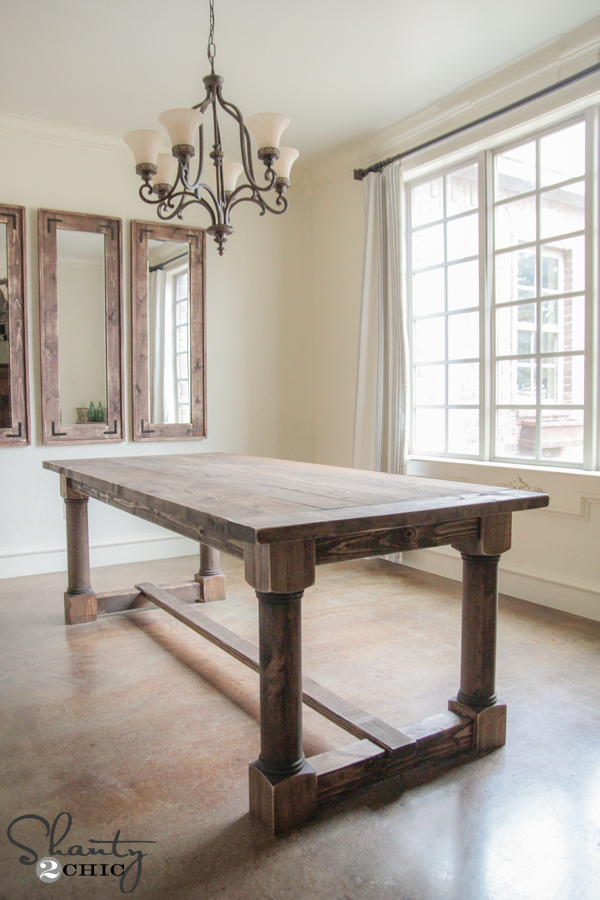The Impact of Dining Room Table Legs on Your Table's Overall Design
From Standard to Modern: Find the Ideal Dining-room Table Legs for Your Style
While timeless designs such as cabriole and transformed legs evoke a sense of classic sophistication, modern styles like hairpin and geometric options provide a chance for striking aesthetic interest. As you consider these aspects, the question remains: exactly how can you perfectly incorporate these diverse leg styles to produce a harmonious eating experience?
Recognizing Table Leg Styles
The selection of eating space table leg styles can dramatically affect both the visual appeals and functionality of the space. Each leg style adds unique useful features and visual aspects, dealing with varied design choices and use requirements. Understanding these styles is essential for selecting the right table that straightens with your overall indoor design vision.
As an example, tapered legs offer a clean, timeless appearance that can improve a room's sophistication, while stand bases offer stability and optimize legroom, making them perfect for smaller spaces. Barrette legs, a trademark of mid-century modern design, introduce a commercial flair, permitting for an airy, open feel. Likewise, trestle legs evoke rustic beauty, providing durable support and a sense of eternity.
Wood legs can bring heat and structure, whereas metal options typically communicate a sleek, modern ambiance. Eventually, comprehending table leg designs is vital for developing a cohesive dining location that shows personal design while ensuring functionality and comfort.
Traditional Table Leg Options
When selecting dining space table legs, typical options often embody classic elegance and workmanship. These layouts mirror a rich heritage and a commitment to quality, making them suitable for those who appreciate timeless aesthetic appeals.
Among the most renowned typical leg designs is the cabriole leg, defined by its elegant curved form. This design typically includes attractive makings and is most typically discovered in Queen Anne and Chippendale furniture. One more popular choice is the transformed leg, which boasts a collection of smooth, rounded forms that provide a timeless appearance while preserving security.
Additionally, the straight leg, while simple, provides a sturdy and unadorned framework that can blend effortlessly with a variety of tabletop styles. For those drawn to ornate describing, claw-and-ball feet legs stimulate a feeling of majesty and can act as a magnificent focal factor in any kind of eating area.
Finally, pedestal bases, although not strictly legs, offer a different standard choice that enables adequate legroom and can be wonderfully sculpted. Each of these typical leg styles contributes to the general setting of an eating space, weding feature with visual charm.

Modern Table Leg Layouts
Modern table leg layouts supply a diverse variety of styles that stress tidy lines and ingenious materials. These layouts frequently prioritize performance while acting as striking focal points within a dining room. Minimalist aesthetics prevail, with legs crafted from materials such as steel, glass, and crafted timber, which add to a contemporary and airy feeling.
One popular layout is the barrette leg, identified by its slender, tapered structure that provides security without frustrating the tabletop (dining room table legs). This design is typically found in mid-century modern furnishings and can effortlessly enhance different dining table shapes. An additional fad is making use of geometric shapes, where legs may tackle angular or asymmetrical kinds, adding visual interest and a touch of creativity

Blending Designs for Unique Spaces
Commonly, house owners seek to produce distinct eating rooms that show their personal design by mixing numerous layout aspects. This technique permits for the consolidation of varied looks, resulting in an unified yet distinctive setting. For instance, pairing a rustic wood table with streamlined, modern steel legs can create a distinctive contrast that elevates the room's general charm.
Additionally, integrating vintage table legs with contemporary our website table tops can evoke a sense of background while preserving a contemporary sensibility. Such combinations not only showcase private preference but likewise encourage imagination, permitting house owners to curate a room that feels both individual and welcoming.
Shade plays a critical function in this mixing process; choosing table legs that match or comparison with the existing color pattern can enhance aesthetic rate of interest. For instance, whitewashed legs can soften the daring of a dark table surface area, producing a balanced aesthetic.
Tips for Choosing the Right Legs
Picking the right table legs is necessary for achieving both functionality and visual appeal in your eating room. Begin by thinking about the general style of your space. Typical setups take advantage of legs that feature complex carvings or turned styles, while modern spaces might require smooth, minimalist designs.
Following, analyze the height and stability of the legs. dining room table legs. Basic table range in between 28 to 30 inches in height, so guarantee the legs enhance this dimension for convenience. Additionally, robust materials, such as hardwood or steel, can enhance stability and long life
Review the leg shape as well-- alternatives include directly, tapered, or stand layouts. Straight legs provide a traditional appearance, while tapered legs can add a touch of style. Pedestal bases supply sufficient legroom and are excellent for smaller sized rooms.
Conclusion
In summary, choosing the suitable eating room table legs calls for mindful consideration of both modern-day and traditional styles. By balancing leg style, elevation, and material with the total decor, a cohesive and welcoming ambience can be achieved.
The range of eating room table leg styles can significantly influence both the looks and performance of the space. Ultimately, comprehending table leg designs is essential for producing a cohesive dining location that shows personal design while guaranteeing practicality and comfort.One of the most legendary standard leg styles is the cabriole leg, defined by its elegant click rounded shape. Web Site Straight legs provide a timeless appearance, while conical legs can add a touch of style.In summary, choosing the ideal dining area table legs calls for careful consideration of both typical and contemporary designs.